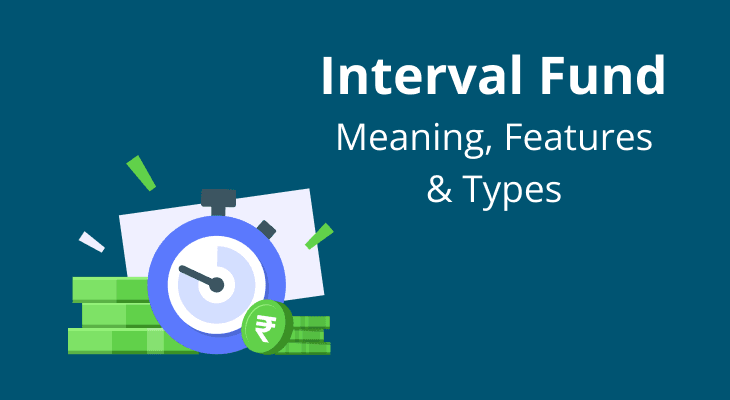Learn all about Mutual Funds
Hedge Funds: Types & Strategies
26 February 2025 | 7 mins read
As funds for investment go, everyone seems to know and talk about mutual funds. Mutual funds are financial instruments that pool the cash of investors into a fund that invests in different financial securities such as equity, debt instruments, and more. Hedge funds are also pooled investments. However, the difference between a hedge fund and a mutual fund stops there.

Real Estate Funds - Meaning, Benefits & Features
26 February 2025 | 6 mins read
In India, just like gold has been a tried and tested source of investment, real estate is viewed as a major asset. Most investors believe that real estate investment can add value to an investor’s net worth and financial portfolio. Besides this, investing in property can yield an income such as rent. However stable and reliable this may be as an investment avenue, not everyone can afford real estate today. This is where real estate mutual funds can offer you instruments tied to real estate without having to worry about owning it.

Global Mutual Funds - Benefits, Risks & Returns
26 February 2025 | 8 mins read
While Indian investors are encouraged to invest in several kinds of mutual fund schemes on the domestic front, investors may be wary of overseas mutual fund investment. Nonetheless, investors may consider global funds for investing in companies abroad. Like in any mutual fund, in a global mutual fund, capital from investors is pooled to buy different securities spread over various countries, as well as those in the investor’s country of origin (home country). Global funds, due to their international nature, are also termed “world funds”.

International Mutual Funds - Meaning, Features & Benefits
26 February 2025 | 7 mins read
In the present market scenario, investors are seeking new ways to make profits and fresh methods to invest their hard-earned capital. A potentially efficient way to diversify your financial portfolio may be to look towards purchasing foreign ETFs, equity, or making investments in international mutual funds. However, as attractive as this may seem, with investors getting strong exposure to companies worldwide, investors should know how much of their assets to allocate to these funds and what funds they should choose to invest in.

Commodity Mutual Funds - Meaning, Types & Benefits
26 February 2025 | 7 mins read
Commodity investment is gradually proving lucrative in India, and globally, as commodities are in demand everywhere. As the demand for commodities like gas, oil, and gold increases, investors view these as assets and believe they may have potentially positive prospects. If the commodities are not viable for some investors to buy, they may consider commodity mutual funds.

Creating a Strong Child Education Fund with SIPs
12 February 2025 | 7 mins read
Years ago, a single Rs 20 note allowed Riya to buy her favourite bread and butter after school. Today, two decades later, she orders the same for ₹100, signalling a more than three-fold increase in price. Rising prices or inflation not only affect everyday products but also apply to services, including education. With education costs rising, having a robust financial plan is more important than ever to help your child achieve their academic goals and create a better future. Mutual funds can make the task easier, particularly through a Systematic Investment Plan (SIP). This article explains the role of mutual fund SIPs in securing your child’s future.

Achieving financial freedom through SIPs
12 February 2025 | 6 mins read
For most people, Systematic Investment Plans (SIPs) and financial freedom may seem like an antithesis – a figure of speech that presents two contrasting ideas. SIPs involve small, regular investments, sometimes as low as ₹100 per month, while financial freedom typically suggests the availability of a substantial corpus. Yet, SIPs are one of the most effective ways to achieve financial freedom. This article will explain the meaning and benefits of SIPs and how they can contribute to financial independence.

What is Assets Under Management (AUM) in Mutual Fund?
13 February 2025 | 6 mins read
Assets Under Management (AUM) is a key metric in the mutual fund industry, representing the total market value of investments managed by a fund on behalf of its investors. It serves as a crucial benchmark for assessing a fund’s size, credibility, and performance capacity. Whether you're a new investor or a seasoned one, understanding AUM can help you make informed decisions and evaluate

What is the Entry Load in Mutual Funds? Meaning & How It Works
13 February 2025 | 5 mins read
Mutual fund investments come with associated costs, and understanding these is crucial for maximising returns. Why? Because these costs can add up and eat away from your final returns, thereby reducing the net value of your investment. While exit load, total expense ratio (TER), and brokerage fees are the typical ones, one cost that is often overlooked is the entry load. Entry load in mutual funds is not common these days, but investors must understand it nonetheless to make informed decisions.

How to Avoid LTCG Tax on Mutual Funds
13 February 2025 | 7 mins read
Investing in mutual funds is an excellent way to grow your wealth, but taxes such as Long-Term Capital Gains (LTCG) tax can reduce your returns. Understanding how to manage and possibly reduce your LTCG tax liability can help you keep more of your earnings. This blog will guide you through what LTCG tax is, how it applies to mutual funds, and strategies to minimise the tax's impact on your investments.

What is a Fund of Funds?
13 February 2025 | 6 mins read
A Fund of Funds (FoF) is a type of mutual fund that invests in other mutual funds, rather than directly holding individual securities like stocks or bonds. This investment approach provides diversified exposure to multiple asset classes by pooling capital into different funds, each with a unique strategy. FoFs are popular among investors seeking broad market exposure without the need for individual fund management. They offer a way to access professional management expertise across various sectors, markets, or investment styles.

Systematic Transfer Plan: What is STP in Mutual Funds?
3 January 2025 | 7 mins read
Within investment instruments, there are different investment strategies and tools that investors can use to modify investments to most accurately suit their financial needs. The STP is one such investment approach within the purview of mutual fund investment. The STP or Systematic Investment Plan is a mechanism whereby an investor can transfer their capital from one mutual fund to another, provided both the funds exist within the same asset management company (AMC) or fund house.

What are Direct Mutual Funds and How Do They Work?
9 January 2025 | 7 mins read
The mutual fund industry in India has picked up pace as people find a range of funds to suit their growing investment needs, including cost-effective options for investors. In terms of affordability and higher returns, a direct mutual fund may be considered by investors. Direct mutual fund schemes are appealing as low-cost options, with low expense ratios. This is because direct mutual funds can be invested directly with the mutual fund house/the asset management company (AMC), without involving brokers or other intermediaries like distributors. Hence, lower costs are associated with these funds, encouraging investors to choose them. Knowing the characteristics of direct mutual funds is paramount if you wish to add these to your portfolio for successful investment.

Small-Cap Funds: Meaning, Features & Benefits
3 January 2025 | 8 mins read
Recently, mutual funds have held their own as investment avenues as they cater to different investor needs. Among the many kinds of mutual funds you get these days, small-cap mutual funds are worth a look. Essentially, these are “aggressive” funds that invest your money in stocks of small-cap organisations. Concerning market capitalisation, small-cap companies fall in the lowest rung of companies, with mid-cap, and large-cap companies, respectively, above small-caps. Small-cap mutual funds are chosen for their potentially lucrative performance in the long term, but they are prone to more risk than other investment alternatives. This is because small-cap stocks are influenced by economic crises and market shifts, considering their low market capitalisation to withstand such shocks.

Interval Fund - Meaning, Features & Taxation
3 January 2025 | 7 mins read
The Securities & Exchange Board of India has long since made it its mission to encourage investors to make investments based on their unique investment goals and investor profile. In this respect, the promotion and popularity of mutual funds as routes for potentially profitable investment have grown rapidly. Every investor will likely find a mutual fund suitable for their needs and unique financial goals, not to mention their risk profile. In this regard, the interval fund has created waves with investors as it offers the flexibility of redeeming units when it suits investors who may decide on redemption at certain intervals to fulfill investment requirements. As an investor, you should know the nuances of all kinds of funds, the benefits and features offered by funds, and how they fit into your taxation model. Without further ado, then, let’s enter the world of interval funds.
